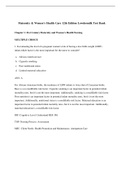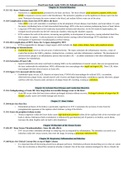Exam (elaborations)
Test Bank for Maternity and Womens Health Care 12th Edition Lowdermilk Chapter 1-37|Complete Guide A+ 978-0275972264
- Institution
- Northeast Ohio Medical University
Test Bank for Maternity and Womens Health Care 12th Edition Lowdermilk Chapter 1-37|Complete Guide A+Maternity and Womens Health Care 12th Edition Lowdermilk Test Bank By Deitra Lowdermilk Mary Catherine Cashion Shannon Perry Kathy Alden Ellen Olshansk # 978-4 Chapter 1. 21st Century Maternity an...
[Show more]




